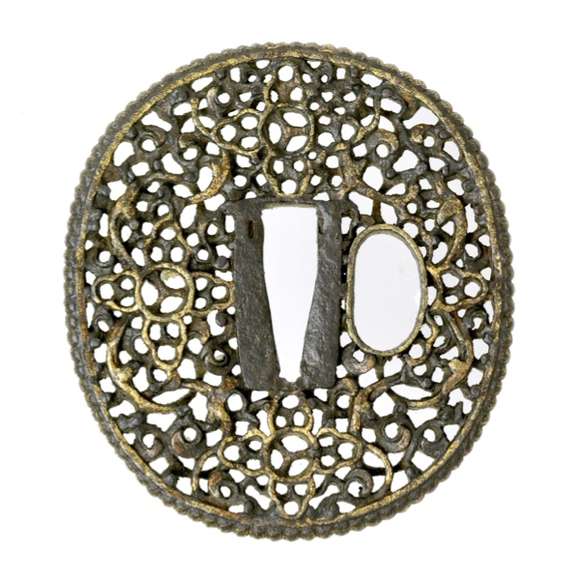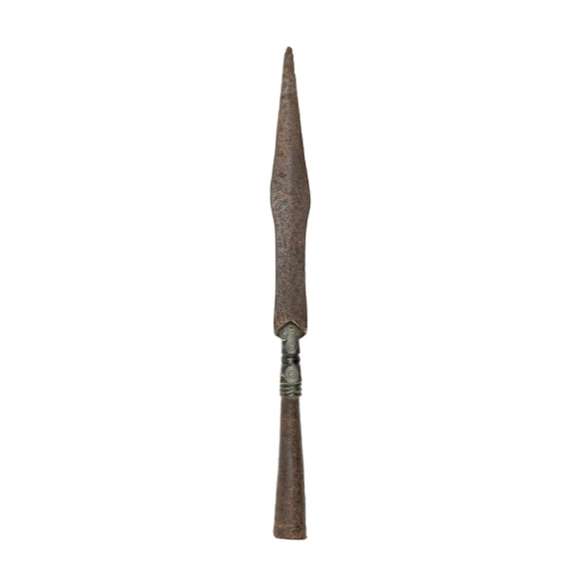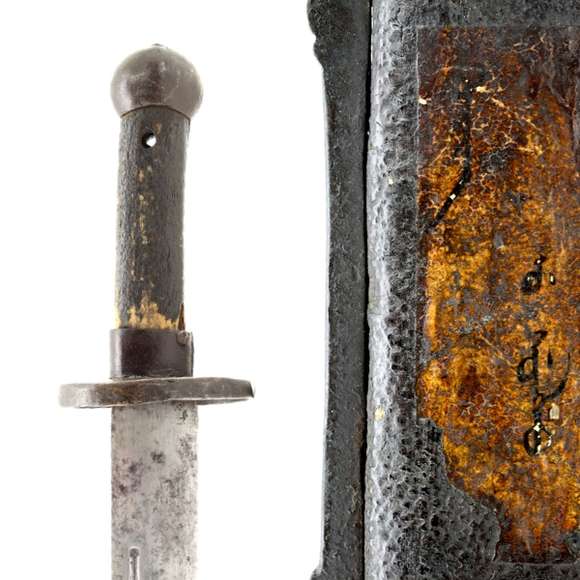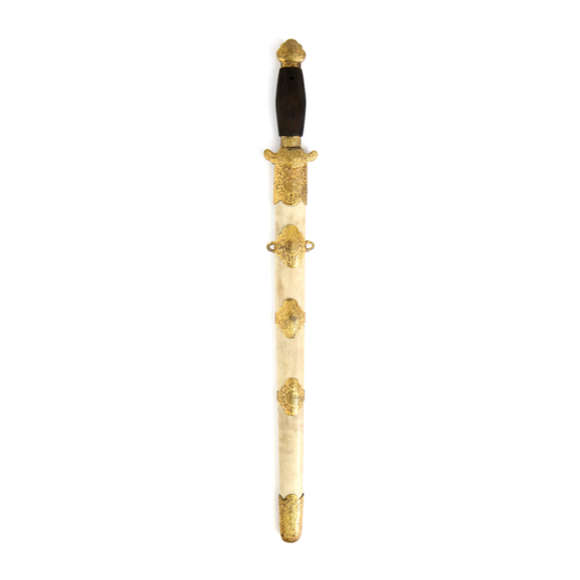Language: Mandarin Chinese
Source: Period dictionary
Description
Gōngbà bǎngzi (弓弝膀子) means "sides of bow grip".1
The grips of bows in the Qing dynasty were usually covered with cork, called ruǎnmù pí (軟木皮) or in rare cases with fabric. Earlier bow grips were entirely covered with cork, often with a small patch of stronger material where the arrow passes.
From the late 18th century onwards it became more popular to cover each side of the cork section grip with ray-skin.

Grip section of a Manchu bow of the mid 19th century. As seen from the belly side of the bow.
Sold by Mandarin Mansion in 2018.
Other bow parts

|
# |
English |
Chinese |
Pinyin transliteration |
|
Bow |
弓 |
Gōng |
|
| 1. | Bow grip | 弓弝 | Gōngbà |
| 2. | Sides of bow grip | 弓弝膀子 | Gōngbà bǎngzi |
| 3. | Arrow slipping spot | 箭溜子 | Jiàn liūzi |
| 4. | Bow ear | 弓弰 | Gōng shāo |
| 5. | Tip | 弰頭 | Shāo tóu |
| 6. | String notch | 扣子 | Kòuzi |
| 7. | String bridge | 弓墊子 | Gōng diànzi |
| 8. | Bow knee (lit. "brain") | 弓腦 | Gōng nǎo |
| 9. | Painted birch bark | 畫樺皮 | Huà huà pí |
| 10. | Bow face | 弓面 | Gōng miàn |
| 11. | Bowstring | 弓弦 | Gōng xián |
| 12. | Bowstring knot | 弦挌搭 | Xián gé dā |
Notes
All terms are from: Wuti Qingwen Jian (五體清文鑑) or "Five languages compendium", a Qing imperial dictionary in Manchu, Mongolian, Uighur, Tibetan, and Chinese of circa 1790. Published under the Qianlong emperor.






